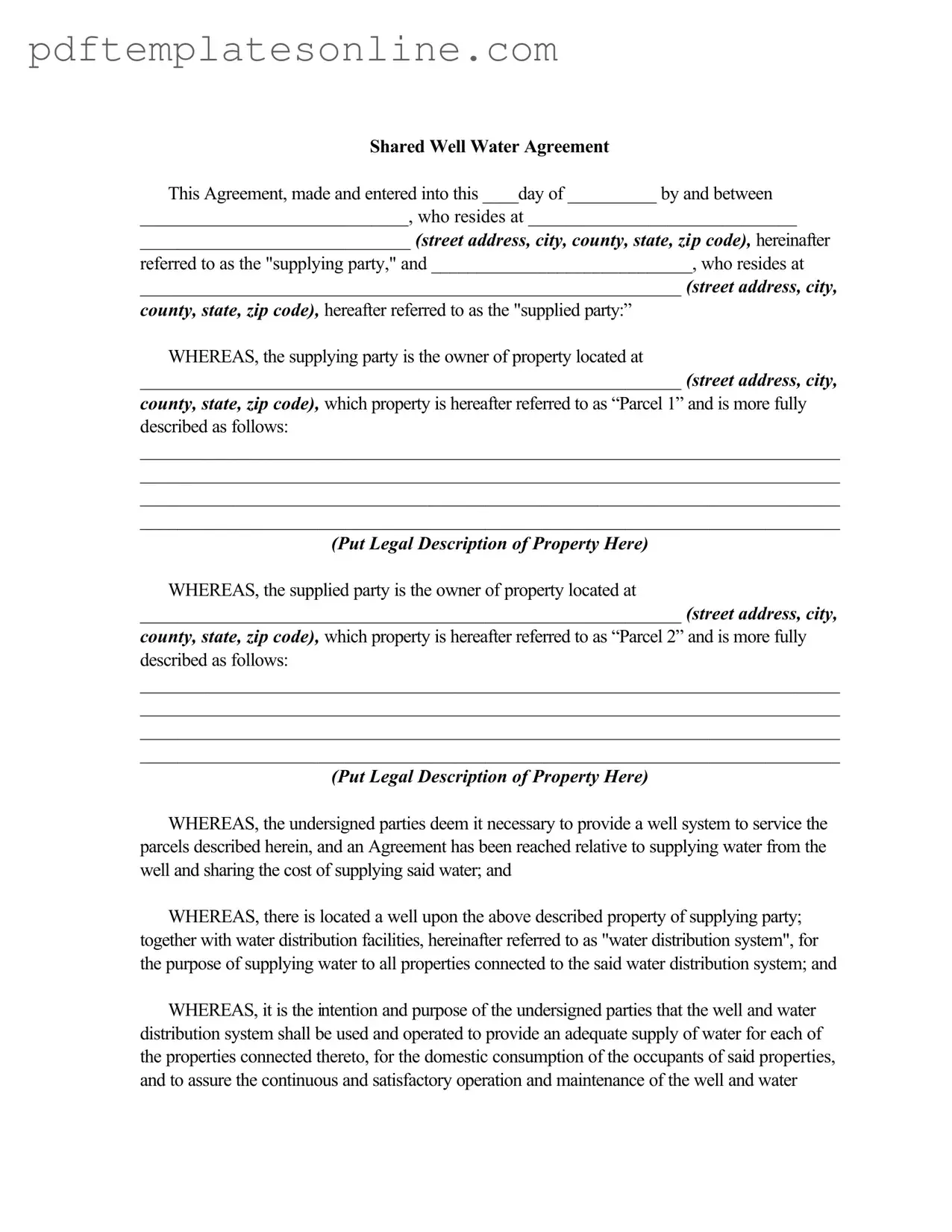Filling out the Shared Well Agreement form can be straightforward, but there are common mistakes that can lead to complications. One frequent error is failing to provide complete addresses for both parties. Each party must include their full street address, city, county, state, and zip code. Missing any part of this information can cause delays in processing the agreement.
Another common mistake is neglecting to include the legal descriptions of the properties involved. This section is crucial as it identifies the parcels connected to the well system. Without accurate legal descriptions, the agreement may not be enforceable, leading to potential disputes in the future.
Many people also overlook the importance of clearly defining the payment terms. It is essential to specify the annual fee amount and the due date. Failing to do so can result in misunderstandings about financial obligations, which may strain relationships between the parties involved.
Another mistake is not addressing the shared expenses for maintenance and operation of the water distribution system. Each party should understand their responsibility for costs related to repairs, electricity, and other expenses. If these details are vague or omitted, disputes may arise regarding who is responsible for what costs.
Additionally, not obtaining consent for expenditures can lead to issues. All parties must agree on any costs incurred for maintenance or improvements, except in emergencies. If consent is not documented, one party may feel unfairly burdened by unexpected expenses.
Some individuals forget to define emergency situations clearly. The agreement should specify what constitutes an emergency and the actions that can be taken without prior consent. Ambiguity in this area can lead to confusion and potential delays in addressing urgent issues.
Another common oversight is failing to detail the easements necessary for the construction and maintenance of the well system. Clear descriptions of these easements are vital for ensuring that all parties understand their rights and responsibilities regarding access to the property.
Lastly, parties often neglect to include a termination clause. This section should outline how parties can exit the agreement and what steps must be taken. Without this information, individuals may find themselves stuck in an agreement longer than they intended.
